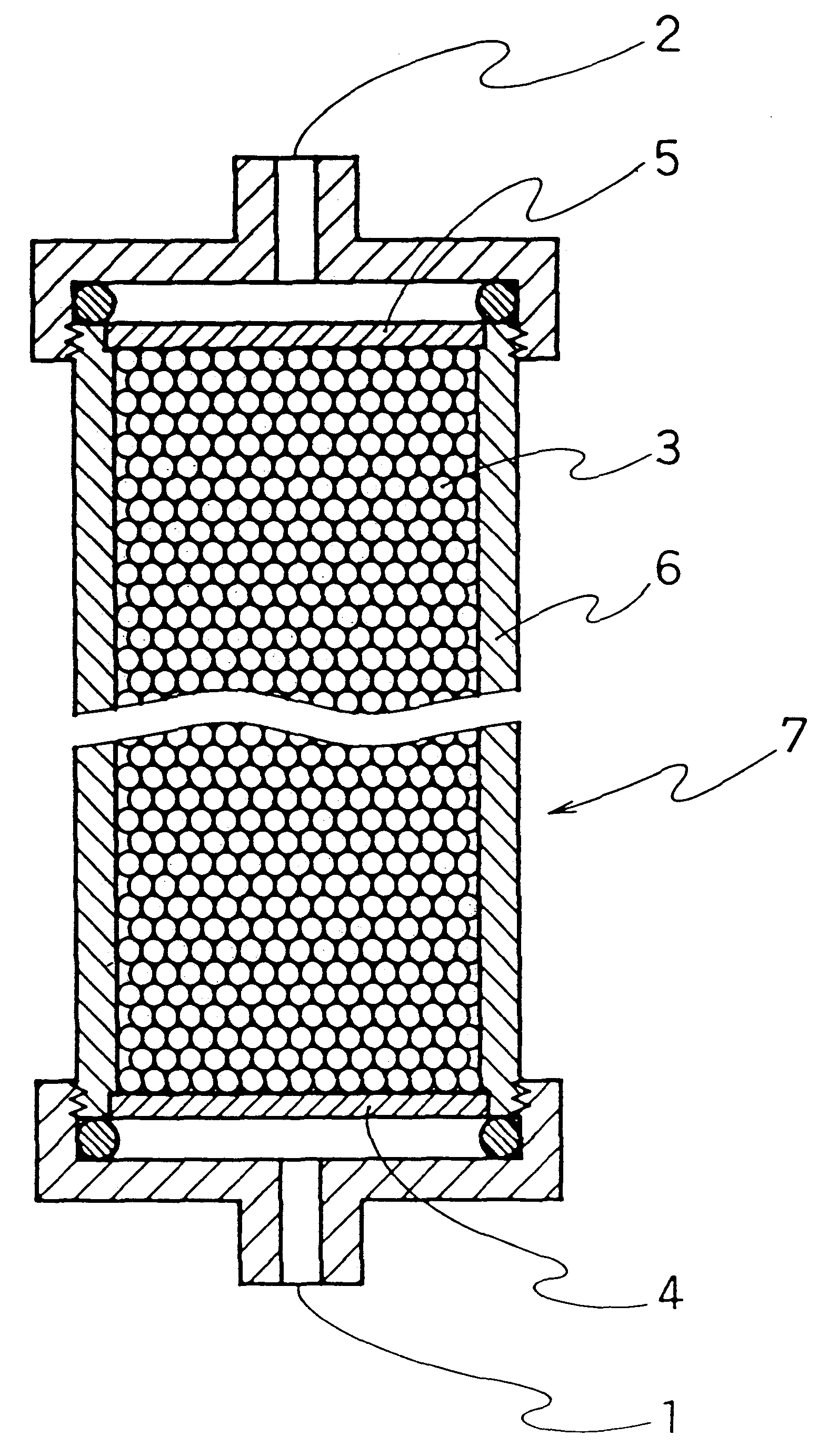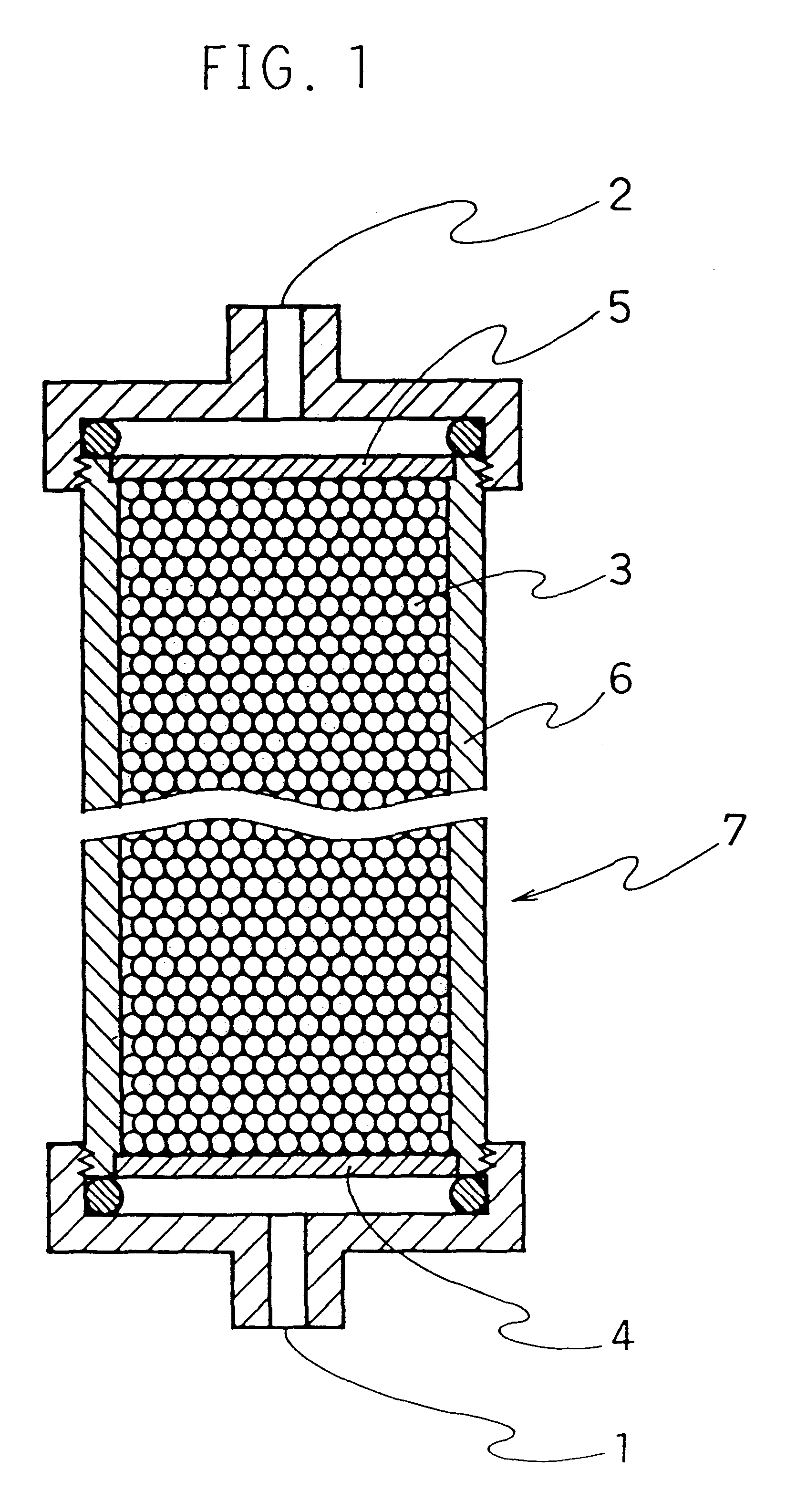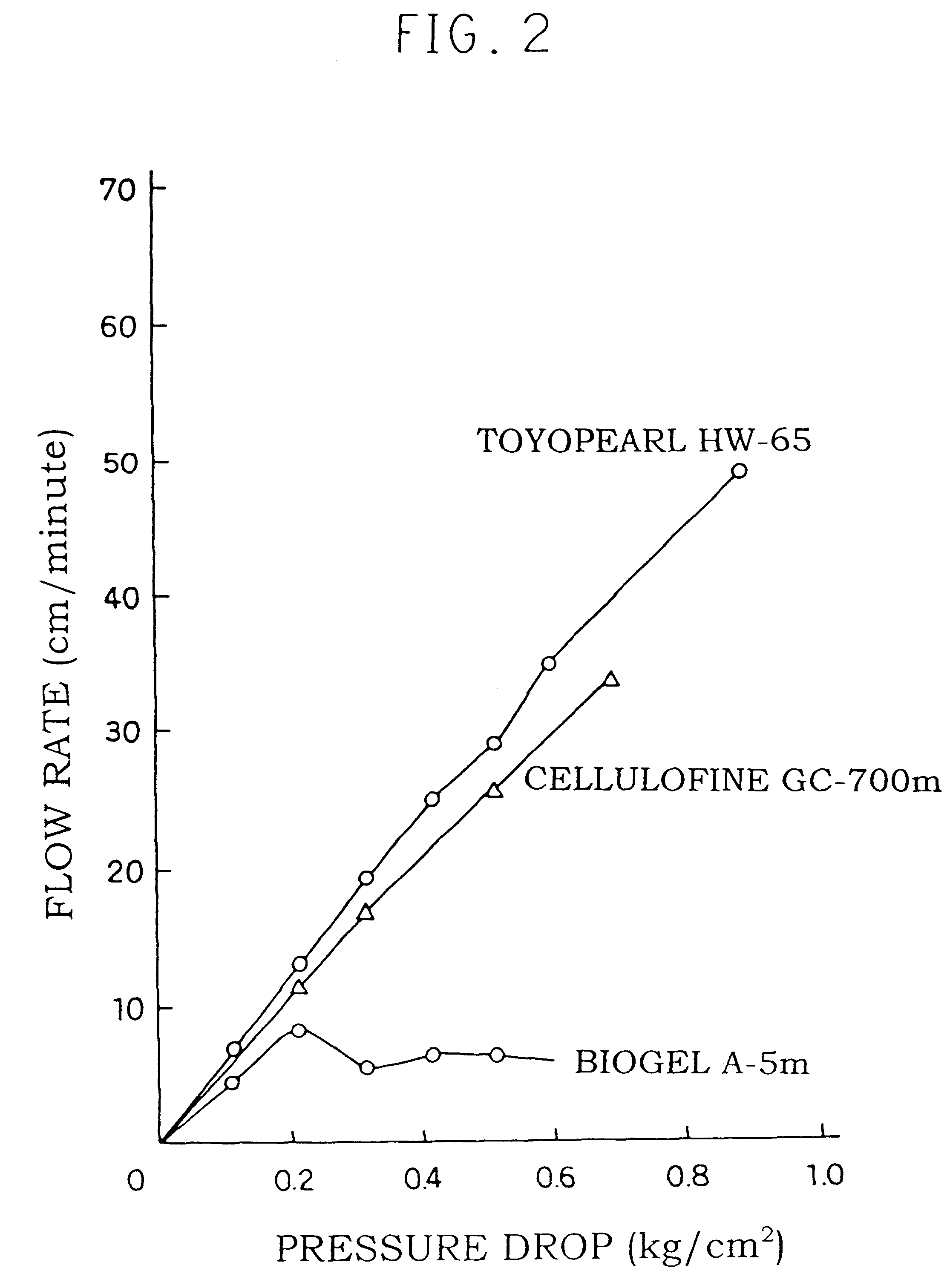Method for removing toxic shock syndrome toxin-1 in body fluids by adsorption
a technology of toxic shock syndrome and toxin-1, which is applied in the direction of water/sewage treatment by ion exchange, other chemical processes, separation processes, etc., can solve the problems of large social group, high mortality, and high possibility of sepsis, and achieve the effect of efficient removal of tsst-1
- Summary
- Abstract
- Description
- Claims
- Application Information
AI Technical Summary
Benefits of technology
Problems solved by technology
Method used
Image
Examples
example 1
Water was added to 170 ml of a porous cellulose gel CELLULOFINE GC-200m (made by Chisso Corporation, Japan, exclusion limit for a globular protein 140,000) up to the total amount of 340 ml, and thereto was added 90 ml of a 2M aqueous solution of sodium hydroxide, and the mixture was kept at 40.degree. C. To the mixture was then added 31 ml of epichlorohydrin, and the reaction was carried out with stirring at 40.degree. C. for 2 hours. After the completion of the reaction, the gel was thoroughly washed with water to give an epoxidized gel.
To 10 ml of the epoxidized gel was added 200 mg of n-octylamine (log P=2.90), and the mixture was allowed to stand for ;reaction in a 50 v / v % aqueous solution of ethanol at 45.degree. C. for 6 days to immobilize. After the completion of the reaction, the gel was thoroughly washed with a 50 v / v % aqueous ethanol solution, ethanol, a 50 v / v % aqueous ethanol solution and water in that order to give a n-octylamine-immobilized gel.
To 0.2 ml of the immo...
example 2
A cetylamine-immobilized gel was prepared in the same manner as in Example 1 except that cetylamine (.SIGMA.f=7.22) was used instead of n-octylamine (log P=2.90) and ethanol was used as a solvent for the immobilization reaction. Adsorption test was made in the same manner as in Example 1 by using this adsorbent, and the concentration of TSST-1 was measured and the adsorption rate was calculated.
example 3
A cetylamine-immobilized gel was prepared in the same manner as in Example 1 except that CELLULOFINE GC-700m (made by Chisso Corporation, Japan, exclusion limit for a globular protein 400,000) was used instead of CELLULOFINE GC-200m. Adsorption test was made in the same manner as in Example 1 by using this adsorbent, and the concentration of TSST-1 was measured and the adsorption rate was calculated.
PUM
| Property | Measurement | Unit |
|---|---|---|
| partition coefficient | aaaaa | aaaaa |
| contact angle | aaaaa | aaaaa |
| molecular weight | aaaaa | aaaaa |
Abstract
Description
Claims
Application Information
 Login to View More
Login to View More - R&D
- Intellectual Property
- Life Sciences
- Materials
- Tech Scout
- Unparalleled Data Quality
- Higher Quality Content
- 60% Fewer Hallucinations
Browse by: Latest US Patents, China's latest patents, Technical Efficacy Thesaurus, Application Domain, Technology Topic, Popular Technical Reports.
© 2025 PatSnap. All rights reserved.Legal|Privacy policy|Modern Slavery Act Transparency Statement|Sitemap|About US| Contact US: help@patsnap.com



